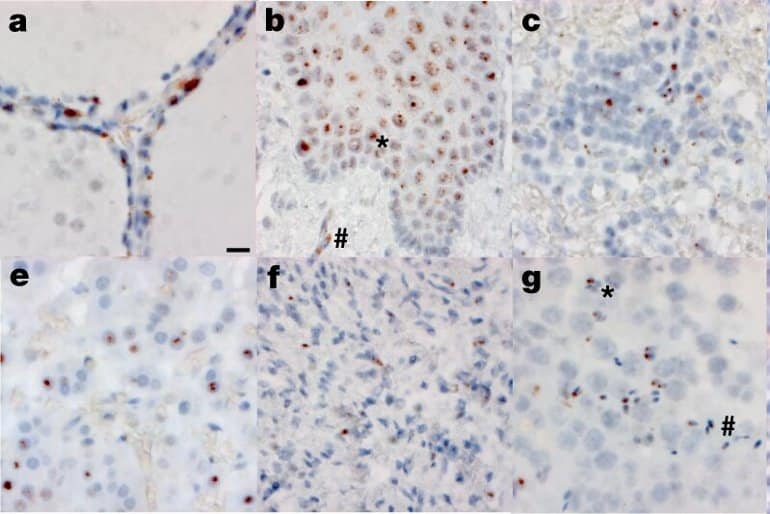summary: autopsy tissue samples of 44 individuals who died of COVID-19 showed SAR-CoV-2, the virus answerable for coronavirus, spread all over the body and to the brain, with traces of the virus lingering for 8 months.
supply: college of Minnesota
An evaluation of tissue samples from the autopsies of 44 people who died with COVID-19 suggests that SAR-CoV-2 virus spread all through the physique—including into the brain—and that it lingered for very nearly eight months.
The look at became published in Nature.
Scientists from the country wide Institutes of fitness (NIH) verified samples from autopsies that have been carried out from April 2020 to March 2021. They conducted extensive sampling of the apprehensive system, including the brain, in 11 of the patients.
RNA and plausible virus in a variety of organs
the entire sufferers died with COVID-19, and none have been vaccinated. The blood plasma of 38 patients tested advantageous for SARS-CoV-2, three demonstrated terrible, and plasma turned into unavailable for the different 3.
Thirty p.c of the sufferers had been feminine, and the median age turned into sixty two.5 years. Twenty-seven affected person (sixty one.4%) had three or greater comorbidities. The median interval from symptom onset to loss of life was 18.5 days.
evaluation showed that SARS-CoV-2, as expected, primarily contaminated and damaged airway and lung tissue. however the researchers also discovered viral RNA in eighty four distinctive physique locations and bodily fluids, and in a single case they remoted viral RNA 230 days after a affected person's indicators started.
The researchers detected SARS-CoV-2 RNA and protein in the hypothalamus and cerebellum of one patient and in the spinal wire and basal ganglia of two different sufferers. however they discovered little hurt to brain tissue, "regardless of vast viral burden."
The investigators additionally isolated manageable SARS-CoV-2 virus from distinctive tissues in and outdoors the respiratory tract, including the mind, heart, lymph nodes, gastrointestinal tract, adrenal gland, and eye. They remoted virus from 25 of fifty five specimens established (forty five%).
The authors wrote, "We proven virus replication in assorted non-respiratory sites throughout the first two weeks following symptom onset."
 RNA in situ (RNAscope) detection of SARS-CoV-2 in extrapulmonary tissues. credit: The researchers
RNA in situ (RNAscope) detection of SARS-CoV-2 in extrapulmonary tissues. credit: The researchers They add, "Our focal point on short postmortem intervals, a comprehensive standardized method to tissue collection, dissecting the mind before fixation, preserving tissue in RNA later, and flash freezing of fresh tissue allowed us to discover and quantify SARS-CoV-2 RNA stages with high sensitivity by [polymerase chain reaction] and [in situ hybridization], as well as isolate virus in telephone subculture from assorted non-respiratory tissues including the mind, which can be outstanding variations compared to different experiences."
viable ramifications for lengthy COVID
Senior examine creator Daniel Chertow, MD, MPH, talked about in an NIH news unlock that, in advance of the work, "the pondering within the box become that SARS-CoV-2 turned into predominantly a respiratory virus."
discovering viral presence all through the physique—and sharing those findings with colleagues a 12 months in the past—helped scientists discover a relationship between commonly contaminated bodily tissues and "lengthy COVID," or signs that persist for weeks and months after infection.
part of a Paxlovid get better trial it's anticipated to start in 2023 contains an extension of the autopsy work highlighted within the Nature look at, in response to coauthor Stephen Hewitt, MD, Ph.D., who serves on a guidance committee for the improve challenge. Autopsies in the recover trial include individuals who both have been vaccinated and infected with variants of situation—facts that weren't available in the day before today's analyze.
"We're hoping to duplicate the information on viral persistence and analyze the relationship with lengthy COVID," Hewitt said. "under a year in, we've about 85 cases, and we're working to expand these efforts."
creator: Jim WappesSource: university of MinnesotaContact: Jim Wappes – tuition of MinnesotaImage: The photograph is credited to the researchers
customary research: Closed entry."SARS-CoV-2 infection and persistence within the human physique and mind at post-mortem" with the aid of Sydney R. Stein et al. Nature
abstract
SARS-CoV-2 an infection and persistence within the human physique and brain at post-mortem
Coronavirus disorder 2019 (COVID-19) is familiar to cause multi-organ dysfunction during acute infection with extreme acute respiratory syndrome coronavirus 2 (SARS-CoV-2), with some patients experiencing extended symptoms, termed submit-acute sequelae of SARS-CoV-2.
although, the burden of infection outdoor the respiratory tract and time to viral clearance don't seem to be neatly characterized, specially within the mind.
here we conducted complete autopsies on 44 patients who died with COVID-19, with extensive sampling of the central frightened system in 11 of those sufferers, to map and quantify the distribution, replication and mobilephone-classification specificity of SARS-CoV-2 throughout the human physique, including the mind, from acute infection to more than seven months following symptom onset.
We reveal that SARS-CoV-2 is largely dispensed, predominantly amongst patients who died with severe COVID-19, and that virus replication is existing in numerous respiratory and non-respiratory tissues, together with the mind, early in an infection. further, we detected persistent SARS-CoV-2 RNA in distinctive anatomic websites, including during the brain, as late as 230 days following symptom onset in a single case.
regardless of extensive distribution of SARS-CoV-2 RNA during the physique, we accompanied little evidence of irritation or direct viral cytopathology outside the respiratory tract. Our records point out that in some patients SARS-CoV-2 may cause systemic infection and persist within the body for months.

Post a Comment